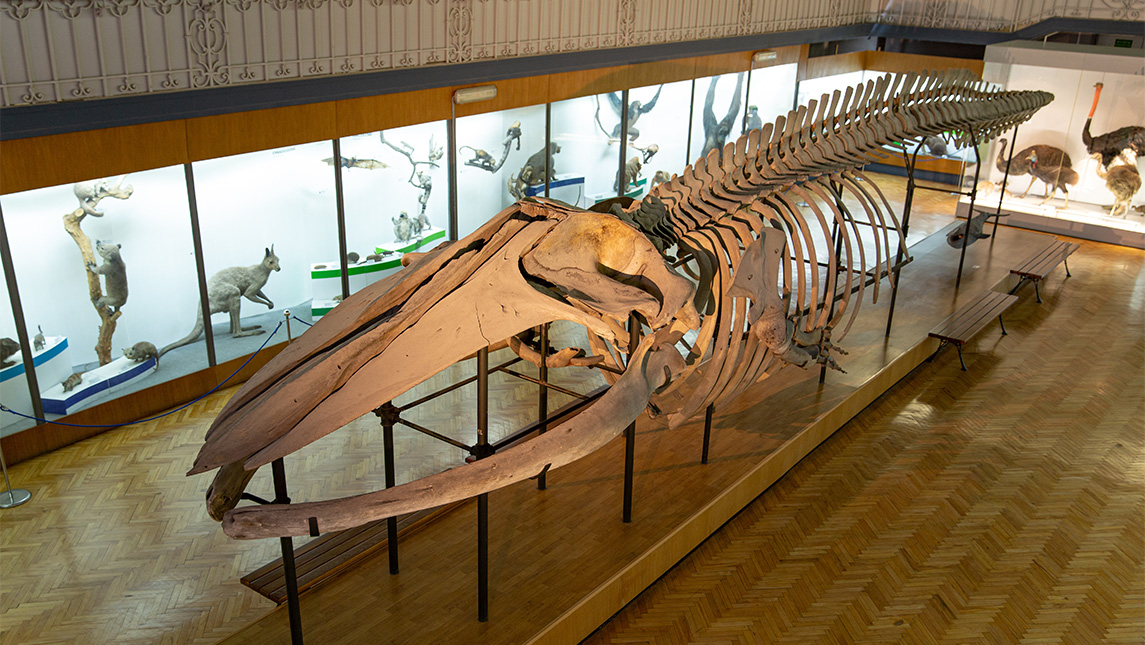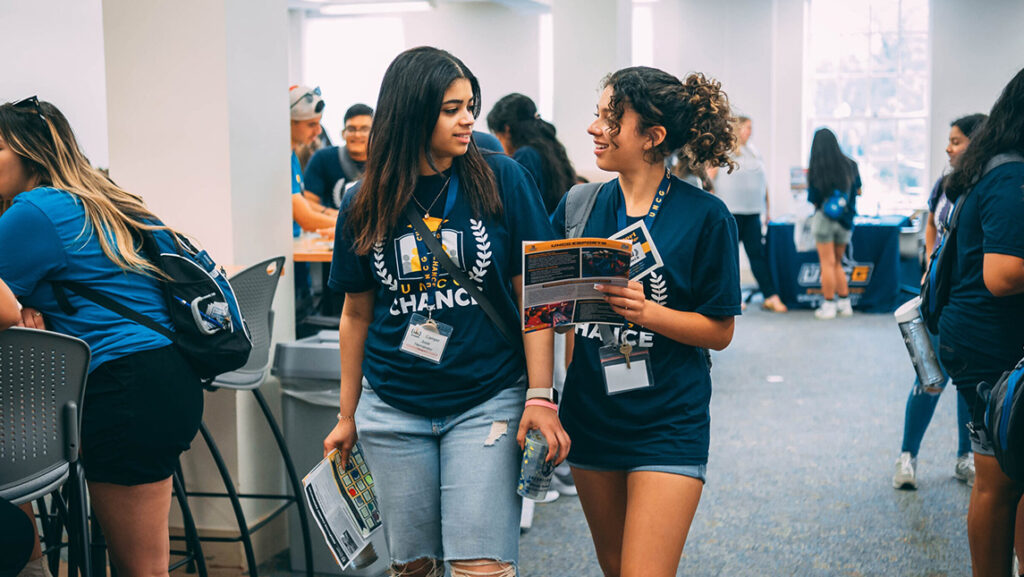It’s a daily sight at natural history museums: Children scamper down the exhibit halls, marveling at the preserved teeth and bones of ancient animal specimens. They eagerly tell their parents which critters are their favorites and peruse the placards full of facts about the creatures’ behavior, as well as sobering messages about how humans impact their homes in the wild.
Yet, those public displays contain only a sliver of the information that scientists curate behind the scenes. The specimens that exist in the museums’ filing cabinets, drawers, and jars represent major infrastructure in the biodiversity sciences.
UNC Greensboro’s Biology Professor Bryan McLean is taking part in a national initiative to put all that specimen information online. The National Science Foundation (NSF) awarded $802,097 of a $2.6 million grant to UNCG, to go towards the digitization of museums’ mammal specimens. Twenty-one institutions will work with McLean for the next four years on this initiative known as “Ranges.”
Everyone, from an ecology doctoral student working on a thesis to a ten-year-old who wants to know which rodents live in their backyard, will be able to research on their own time.
Mammals and modernization
There are two reasons that McLean finds mammals a fascinating area of study.
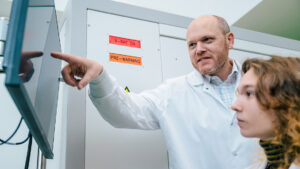
“People have an easy time relating to them when thinking about conservation issues and biodiversity theory,” says McLean, “Although what’s interesting about that, is way over half of all mammals globally are a mouse or bat.”
The second reason, he says, is their direct correlation to human health and evolution. “When you’re thinking about issues of parasite and pathogen loads, or spillover of viruses from other mammals to humans, it’s natural to start looking in the wild.”
But despite that fascination, McLean says the digital cataloging of mammal traits is trailing behind that of other fauna such as invertebrates. Specifically, much of the information recorded by original specimen collectors – often attached to museum specimens – cannot be easily accessed because they exist only in written form on physical specimens.
“Museums are notoriously short staffed and underfunded,” he explains, “Getting all the information that might be associated with a specimen online and accessible to everyone is really hard. We just don’t have the resources. And so the NSF, over the past decade or more, has been doing targeted funding of digitization. It’s allowed the broader community to digitize these things.”
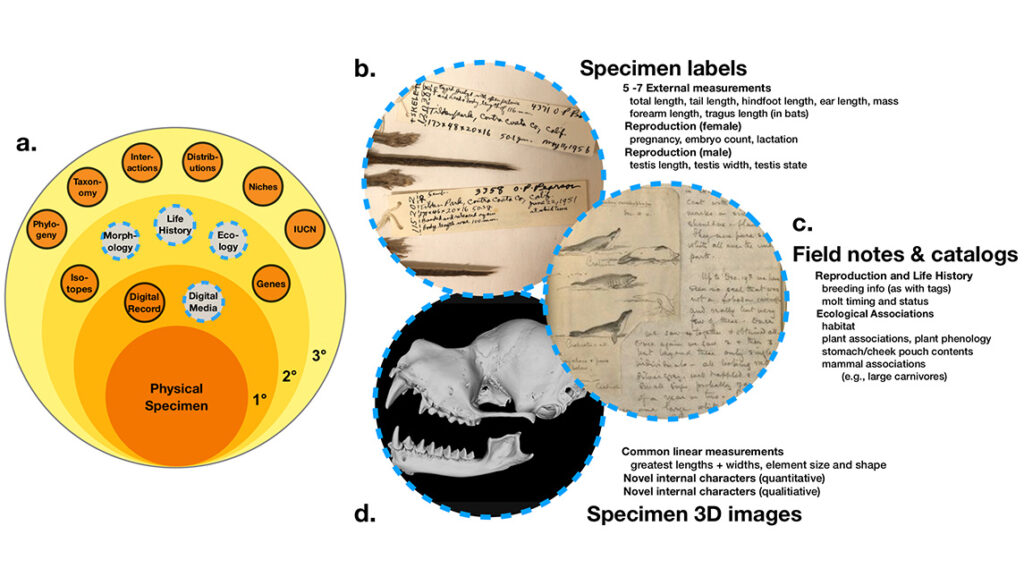
Information that’s just a click away
McLean frequently takes UNCG’s biology students out into the field. But he doesn’t have to find a new specimen to make a discovery. Often, he and his students delve deeper into the collections of other researchers.
His interest in making natural history data easier to access goes back to his days as a student.
He worked with the Museum of Southwestern Biology while getting his doctorate, and was introduced to Arctos, a museum collections management database that McLean and his lab at UNCG use to record their own observations. He did his postdoc with the Florida Museum of Natural History, another place he says understood the value of expanding access to biodiversity records by making them digital, partly through the NSF-funded iDigBio initiative.
Greater access to museum specimens would help researchers expand on topics such as adaptations to climate change and human land use.
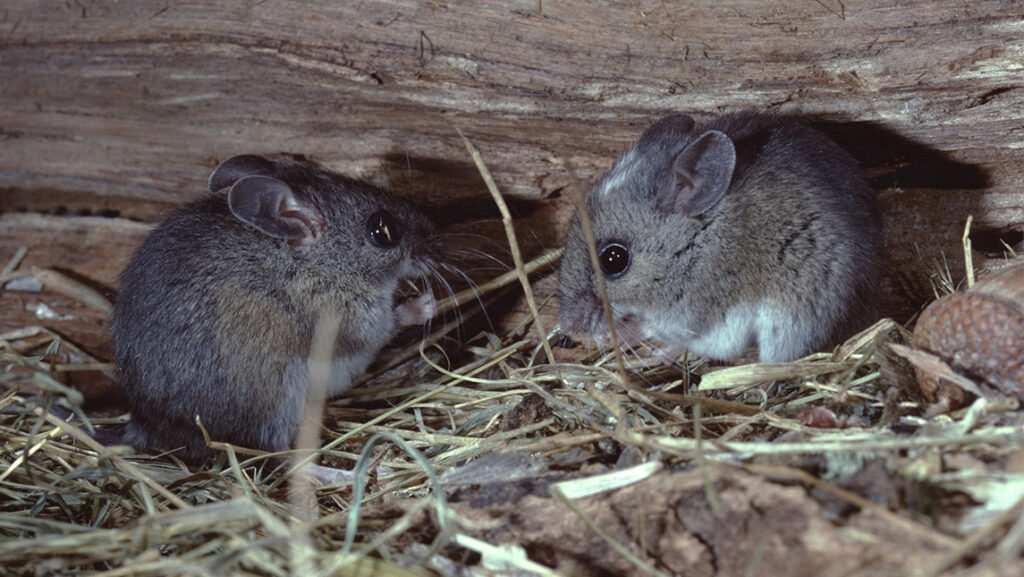
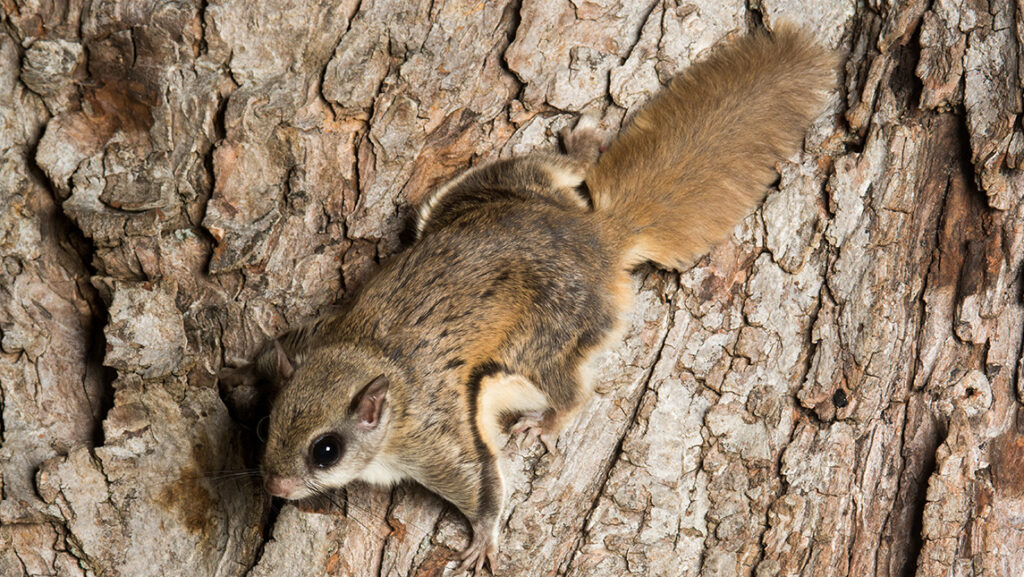
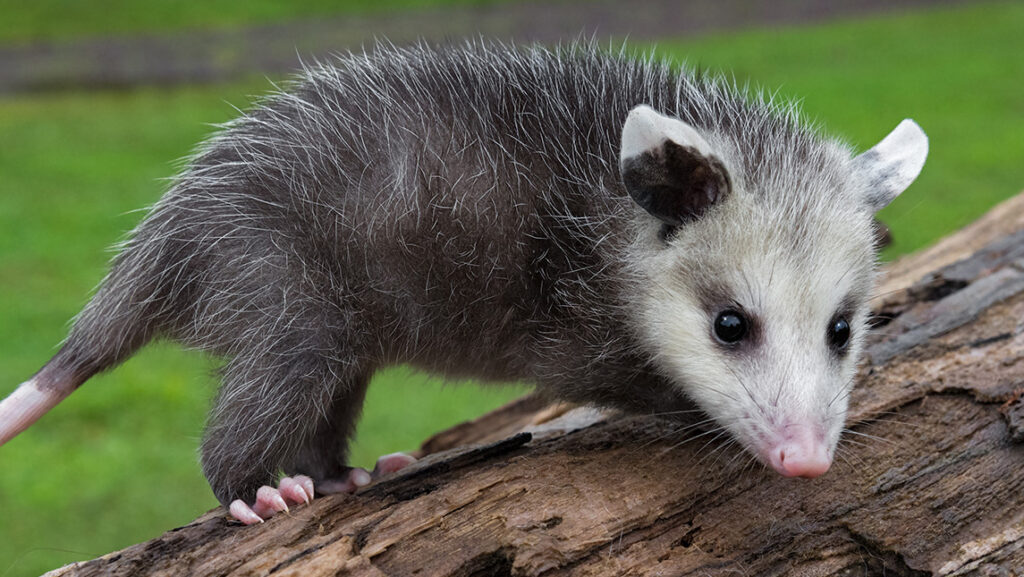
“The more I thought about how to use digitization, we realized that for mammals, we weren’t close to where we wanted to be to do the types of work we wanted,” says McLean.
And so, he formed a network with other museums and drafted a proposal for the NSF that led to this grant.
The partners in this project include large institutions as well as Universities or private museums with smaller, regional-focused collections. “It doesn’t matter if you are a big institution or a small institution, with a big collection of mammals or a tiny collection. We’re funding people to do the work across the board and come together, and to think about the best practices for doing it.”
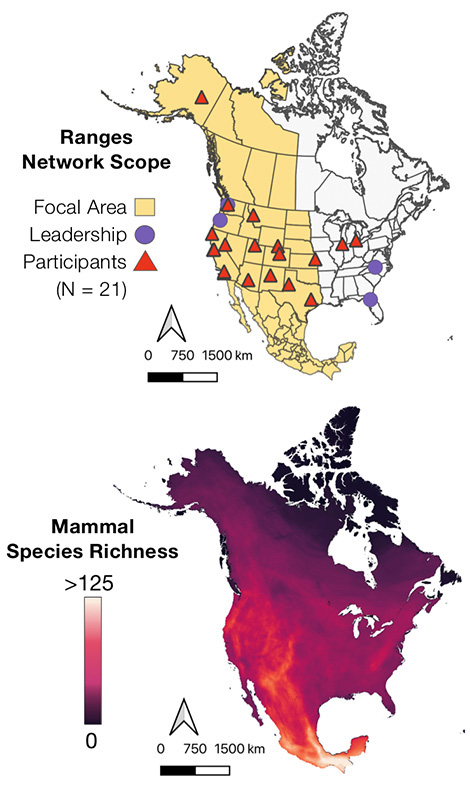
Academics and hobbyists join forces
Opening up this wealth of information to students at UNCG and across the world will reshape careers in biology, conservation, genetics, and genomics.
“We have the capacity to generate so much data about species occurrences on the landscape,” says McLean. “A big part of that is citizen science. You can go to websites like iNaturalist, or eBird where people log their bird observations, and see the rate of increase of how many records are added each year. It’s exponential.”
It could even go towards public policy. McLean refers to the COP 15 agreement. This came out of a 2022 biodiversity conference held by the United Nations Convention on Biological Diversity. There, international leaders talked about limiting biodiversity loss.
McLean says to do that, they have to have their finger on the status and trends for species around the world. “We have to become comfortable, as biodiversity scientists, with dealing with large amounts of data,” he says.
That vast amount of data can be daunting to students and policy makers alike, which is why organizing it in a convenient location is so important. But the databases and websites that McLean will help build are not just for world leaders or top researchers. They’re for anyone and everyone.
McLean says it won’t replace the experience of taking your family to a museum. Instead, it will supplement those trips with the information that might otherwise remain behind locked doors.
“It’s increasing the value of museums,” he says, “And increasing the value of each specimen. The more information we can gather about each specimen, and the new data that we generate, the more valuable they are.”
Story by Janet Imrick, University Communications
Photography by Sean Norona, University Communications
Imagery courtesy of Ranges and Adobe Stock
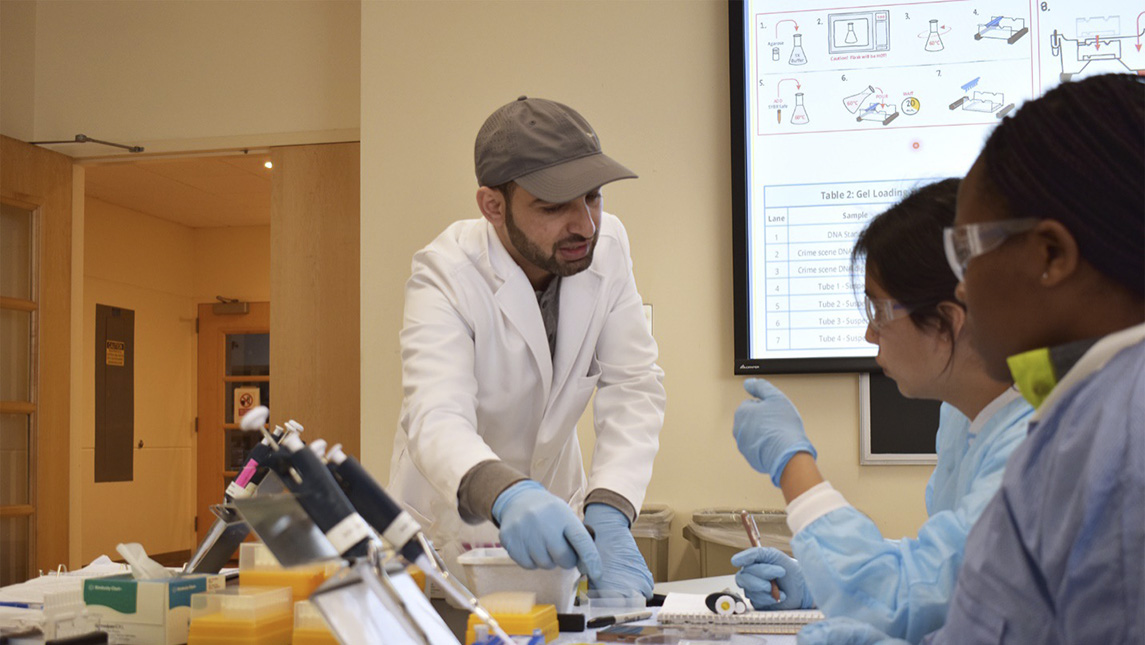
Be a trailblazer in the arts and sciences
